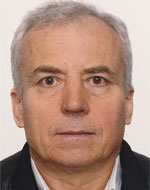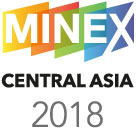- Home
- All Speakers
- Stanislav Yakimenko

Stanislav Yakimenko
Director
Geo Tom LLP
Speaker profile
Born 1957, March 31.
Geological engineer experienced in soil gas surveys. Good experience of practical work. Specialized in exploration for oil & gas and mineral resources in Kazakhstan and Russia. Experienced in geochem surveys and geological risk management, organizing field data acquisitions, processing and report preparation.
Presentation summary
Iodine, hydrogen sulfide, radon and methane – express indicators of buried porphyry copper mineralization
An important role of certain gas and vapor compounds as direct evidences of hydrothermal processes was established in recent years. It has been demonstrated that high concentrations of halogens, hydrogen sulfide, mercury, radioactive and other gases can witness buried and hidden ore mineralization. They are superimposed on geochemical situation in a pattern related to the disposition of subsurface Post Hydrothermal Gases Leakage Fluxes (PHGLF) and can be interpreted for prognosis purposes. PHGLF are regarded as inherited elements of hydrothermal fluid migration systems, spatially bound with ore controlling structures.
Ore elements and gases soil distribution over buried porphyry copper productive structure in Balkhash region (Kazakhstan) is the subject of this study. Metal and gases concentrations including Cu, Mo, Pb, Zn, Ag, Mn, Co, W, V and H2S, CH4, Sum CxHy, Rn220, Rn222 were distinguished, accordingly, by ICP and in situ soil gas analysis. Soil gases distribution reflects confidently buried porphyry copper structure. Contours of integrated map of metals-in-soil distribution are quite similar to those of volatiles with numerous closely spaced positive halo anomalies grouped around central part of the surveyed PHGLF. Cu+Mo and polymetallic zones coincide well with coupled central negative and edge positive anomalies of all gases. Soil gas analysis can distinguish deeply buried porphyry copper targets, which are too elusive for conventional geochem surveys
